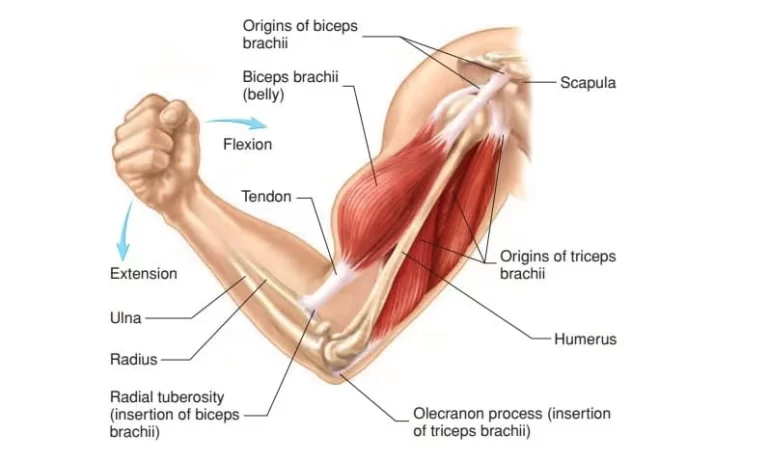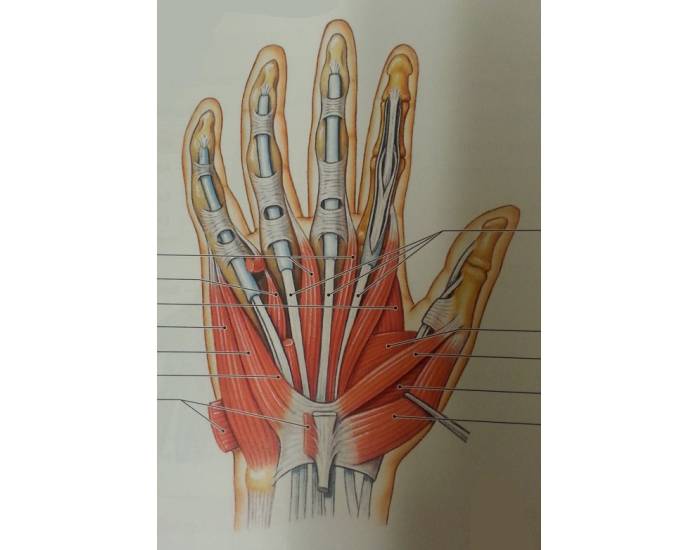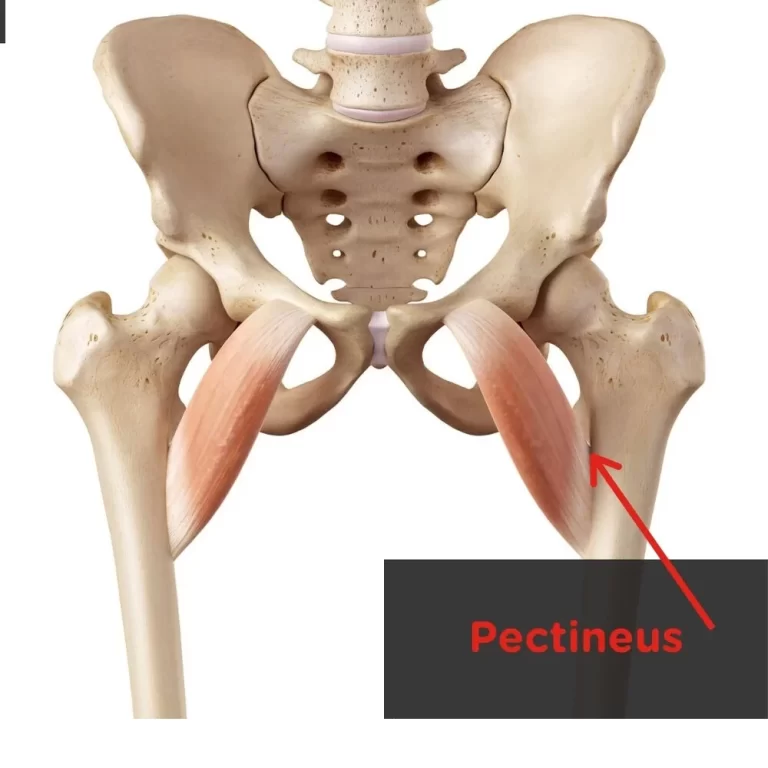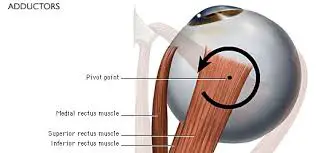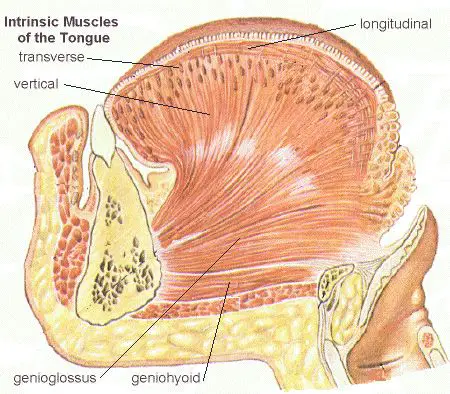How to Lose Fat and Increase Muscle Mass
Table of Contents
Introduction of lose fat and increase muscle mass
Are you mindful of keeping your body in good shape? You likely want your body to burn fat instead of muscle. Your body isn’t aware of what you desire, though. It just understands that it needs to draw stored energy from someplace to survive and perform well under the current circumstances.
And that might come from muscle, fat, or a mix of the two. But you have to lose only fat from your body, not muscle. Are you curious about how? Learn about it by reading the most recent post.
Anatomy of Fat and Muscle
Anatomy of Fat
Your body is made of connective tissue called adipose tissue, sometimes referred to as body fat. It can be found between your internal organs (visceral fat), beneath your skin (subcutaneous fat), and even inside the cavities of your bones (bone marrow adipose tissue).
The main functions of body fat are insulation and energy storage and release. It is now acknowledged by scientists, nevertheless, that your endocrine system uses it as an active organ. Adipose tissue connects to other organs throughout your body through hormone signals and is home to nerve cells, blood vessels, and other bodily components. It plays several crucial roles in controlling overall health. However, these can malfunction if you have too little or too much of it.
Function of fat
Body fat performs a variety of crucial roles, such as:
- storing and releasing energy.
- protection against heat and cold.
- surrounding soft organs with padding.
- controlling satiety and hunger.
- preserving the equilibrium of energy.
- controlling cholesterol and blood sugar.
- preserving insulin sensitivity.
- creating thermogenic heat.
- supporting immunity.
- sex hormone metabolism.
How does fat tissue work in concert with other organs?
Adipose tissue interacts with other organs and the central nervous system of your body by secreting certain hormones and reacting to others. Through signals related to hunger and satiety (feeling full), it controls the supply and demand of energy. In response to insulin, it turns extra blood sugar into lipids, which it stores for later use.
The location of fat deposits in your body is partially influenced by sex hormones. Additionally, adipose tissue has its own active immune cells that, in response to specific stimuli, either eliminate dead fat cells or cause inflammation. A malfunction in these processes leads to metabolic diseases.
The Adipose tissue – where it is found?
You have adipose tissue all over your body. The main storage facilities are:
- Adipose tissue subcutaneously (SAT). This fat is found in the space between your muscles and skin.
- Visceral fat (VAT) tissue. This is the fat in your abdominal cavity that envelops your organs.
Additional places are as follows:
- in the bone marrow.
- within breast tissue.
- amongst muscles.
- all around your heart.
- in the sockets of your eyes.
- One type of adipose tissue that is predominant in infancy and decreases with age is called brown adipose tissue. It can be located in the back and surrounding clavicle and vertebrae.
What is the appearance of adipose tissue?
Adipose white tissue
The most common type of adipose tissue is white fat, which can be found in your body as visceral fat, bone marrow fat, and subcutaneous fat. Adipocytes, or white fat cells, are made up of a few cellular organelles and a single lipid droplet, or fat molecule. They offer protection against high temperatures, energy storage, and cushioning for delicate organs. Other cell types known as stromal vascular fraction (SVF) cells are also included in WAT. These cells work together to secrete hormones that control metabolism, inflammatory response, hunger and satiety, and energy balance.
Adipose brown tissue
Humans have less brown adipose tissue as they age, with the majority of it existing in infancy. It is mostly found in the upper back. Compared to white adipocytes, brown adipocytes (fat cells) are more complicated, with numerous lipid droplets and cellular organelles. The colour of brown fat cells is due to the iron that is present in these organelles. The brown adipocytes can produce a lot of heat because of their organelles. The main purpose of BAT is to produce heat by a mechanism known as non-shivering thermogenesis, which aids in preventing hypothermia in newborns.
Anatomy of muscle
Soft tissues make up muscles. Your body contains more than 600 muscles. The functions of various muscle groups vary. Running, jumping, and doing tiny motor tasks like threading a needle all need the activation of specific muscles. Your heart beats hundreds of times a day, making it an incredibly strong muscle.
Numerous conditions, traumas, and illnesses can impact muscle function. These ailments may result in weakening, spasms, or pain in the muscles. Paralysis can result from more serious disorders. Heart failure, including cardiomyopathy, impairs the heart’s ability to pump blood throughout the body.
Structure of muscle
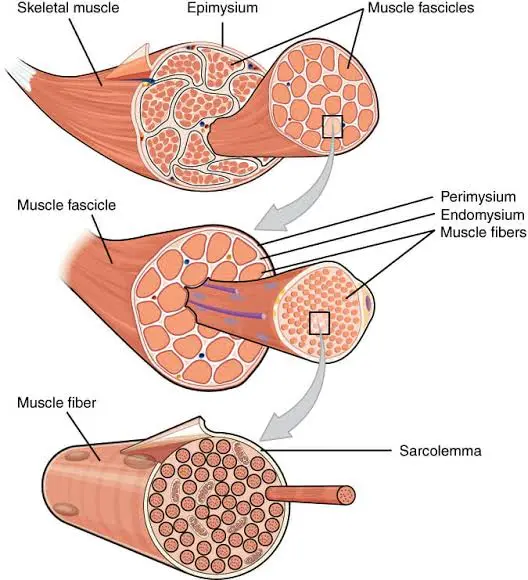
Skeletal muscle tissue, connective tissue, nerve tissue, and blood or vascular tissue make up every organ or muscle. There are significant differences in the size, form, and fibre arrangement of skeletal muscles. They vary in size from massive masses like the thigh muscles to little strands like the middle ear’s stapedius muscle. The fibres of some muscles converge to a narrow connection, run parallel to the muscle’s long axis, and are oblique in other muscles.
A single cylindrical muscle cell makes up each skeletal muscle fibre. A single skeletal muscle can consist of hundreds or even thousands of interconnected muscle fibres that are covered in connective tissue. The epimysium, a connective tissue sheath, envelops every muscle. The fascia, which is connective tissue situated beyond the epimysium, envelops and divides the muscles. A portion of the muscle’s epimysium protrudes inward to create compartments. There is a bundle of muscle fibres within each compartment. Every muscle fibre bundle is referred to as a fasciculus, and the perimysium is the layer of connective tissue that envelops it. Every individual muscle cell, known as muscle fibre, is encircled by connective tissue, known as the endomysium, within the fasciculus.
Skeletal muscle fibres, similar to other bodies are delicate and supple. The delicate cells are supported, shielded, and enabled to tolerate contraction stresses by the connective tissue covering. Additionally, the coatings offer nerve and blood vessel passageways.
Typically, the endomysium, perimysium, and epimysium extend outside the muscle’s fleshy portion, such as the belly or gaster, to form an extensive, flat sheet-like aponeurosis or a thick tendon resembling a rope. Indirect attachments from muscles to the periosteum of bones or to the connective tissue of other muscles are formed by the tendon and aponeurosis. A muscle usually spans a joint and has tendons at both ends that connect it to the bones. While the other end of the bone moves. Due to muscle, one of the bones stays comparatively stationary or stable.
There is an abundance of blood vessels and nerves in skeletal muscles. This has a direct bearing on contraction, which is the main job of skeletal muscle. Skeletal muscle fibres require an impulse from a nerve cell to contract. Every nerve that pierces a skeletal muscle’s epimysium is usually accompanied by an artery and at least one vein. Nerve and blood vessel branches, known as capillaries, are tiny blood vessels that accompany the connective tissue elements of a nerve cell’s muscle.
Types of muscle
There are three different kinds of muscle in the body: cardiac, smooth, and skeletal (striated).
The body’s more than 600 muscles collectively make up around 40% of an individual’s weight.
The majority of skeletal muscles have names that indicate a characteristic of the muscle. Frequently, a name will integrate multiple qualities. You’ll learn and retain the properties of the muscle more easily if you associate its name with it. The terms below refer to characteristics of muscles that are employed in muscle naming.
Naming of muscle
- Size: minimums (little), brevis (short); longus (long); vastus (big); and Maximus (great).
- Shape: latissimus (broad); teres (round); trapezius (similar to a trapezoid, a four-sided shape with two parallel sides); deltoid (triangular); rhomboid (like a rhombus with equal and parallel sides).
- Fibres run in the following directions: rectus (straight); transverse (across); oblique (diagonally); and orbicularis (circular).
- Location: brachia (arm), gluteus (buttock or rump), pectorals (chest); sub- (under or beneath); supra- (above); infra- (below); lateralise (lateral).
Function of muscle
Almost every system and function in the body depends on muscles. Various muscle types assist with:
- Swallowing, speaking, and breathing.
- Food digestion and waste removal.
- Getting up, sitting still, and moving.
- Pumping blood via the arteries and heart.
- Contracting and relaxing the uterine muscles while pushing the baby through the delivery canal.
- Perceiving and perceiving.
Introduction to body composition
The quantity of fat and fat-free mass (bone, muscle, and water) in your body is referred to as your body composition. Comparing body composition analysis to other screening techniques like body mass index (BMI), which solely considers height and weight, provides a more comprehensive knowledge of health.
This is because your body fat percentage, as opposed to your muscle mass, more accurately represents your general health than either your weight or your BMI. Consequently, body re-composition emphasizes body composition above weight. Body recomposition is a lifestyle approach that involves fitness and nutrition strategies that help you achieve positive changes in your body’s fat-to-muscle ratio, unlike a typical diet. “Body recomposition” comes from the verb “recompose,” which means “to form something again or differently.” Even though body composition
with others who are merely attempting to lose weight and get fit. On the other hand, maintaining a healthy proportion of muscle mass to body fat will enhance your well-being and lower your chance of contracting the mentioned illnesses. Body recomposition can alter your body’s composition to increase muscle and decrease fat. It’s interesting to note that because of the concurrent muscle building, choosing body recomposition techniques over other weight reduction strategies may result in considerably slower weight loss or no weight loss at all.
Contrary to common opinion, body weight is not the best measure of general health and fitness—rather, it’s your ratio of muscle to fat. Additionally, gaining muscle increases your resting metabolic rate (RMR), which increases the amount of calories you burn.
How is body recomposition accomplished?
There is no defined regimen because body recomposition is more of a lifestyle than a diet. Rather, those who wish to burn fat and increase muscle must commit to altering their diet and exercise routines in a way that promotes body recomposition.
Instead of monitoring your weight on a scale, you should measure your body circumference and body fat using tools like skinfold callipers to assess your progress.
Fundamentals of body composition
To burn more energy, persons who use traditional weight loss strategies may substantially reduce their calorie intake and increase their cardiovascular exercise. Even though weight loss is a possibility, this will probably reduce both muscle and fat mass.
There’s more to body composition than just losing weight.
When trying to reduce weight, most people use a scale to measure their progress. Most dieters assume they are successful if the number on the scale decreases. However, the issue with utilizing a scale as your sole tool for tracking your progress is that most scales aren’t able to distinguish between muscle loss and fat reduction, which is a crucial component of health assessment.
Excess body fat has been associated with numerous health problems and may raise your chance of developing chronic illnesses including diabetes, cancer, and heart disease.
When implementing a body recomposition regimen, it’s critical to reduce fat while maintaining and growing muscle. To achieve this, dietary and activity adjustments are necessary. Cardiovascular activity is crucial for weight loss and general health, while strength training is required to change the composition of the body.
Furthermore, a diet rich in protein promotes muscle building and fat loss. Depending on your ultimate goal, there are many body recomposition strategies. For instance, the food and activity requirements of a lean bodybuilder seeking to gain muscle and reduce fat will differ from those of an overweight or obese person seeking to reduce weight and tone up their muscles.
Components of How to lose fat and increase muscle mass
Nutritional Requirements for Losing Fat Instead of Muscle:
- Consume Enough Protein
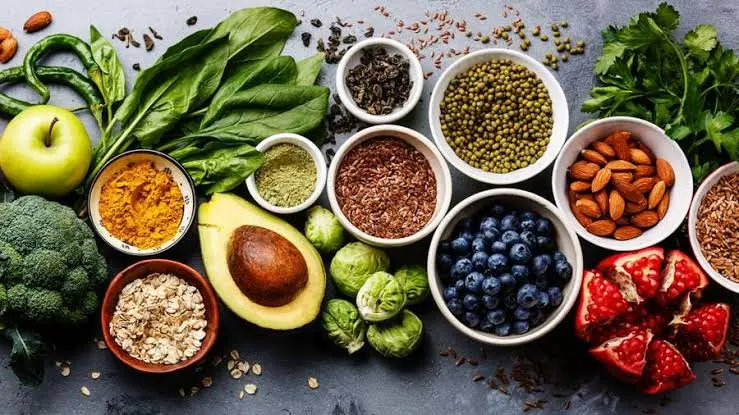
A sufficient daily intake of protein is the most critical dietary requirement for sustaining muscle mass. Several studies have demonstrated that eating enough protein each day is the key to decreasing fat without losing muscle. Because of an increased protein diet, even in the absence of an appropriate weight training regimen, you will lose more weight in the form of body fat than muscle mass.
What is the recommended daily intake of protein, then? The sweet spot for protein intake is anywhere between 0.8 and 1.3 grammes per pound of your present body weight, according to studies and practical experience.
Importance of protein in losing Fat Instead of Muscle
The correct nutrition is essential when attempting to gain muscle.
Regardless of fitness objectives, a well-balanced diet full of complete foods—such as fresh vegetables, healthy fats, complex carbohydrates, and protein—is optimal for everyone. Increased protein consumption may be the main focus for those attempting to change their body composition since research indicates that a diet high in protein is essential for fostering muscle growth.
For instance, one analysis found that the optimal daily protein intake for maximizing strength and muscle building is 0.73-0.1 g/lb (1.6-2.2 g/kg) of body weight. Consuming meals high in protein, such as eggs, poultry, dairy products, and protein supplements every three to four hours, is advised to ensure that protein sources are distributed evenly throughout the day.
- Don’t Cut Down on Calories Too Much
You must generate a calorie deficit to lose any body fat at all. This means consuming fewer calories than you require for your body to burn stored fat for energy.
Depending on how much you lower your daily calorie intake and how much you go below maintenance, you can categorise this calorie deficit as minor, moderate, or high. For most people, a moderate calorie deficit of roughly 20% below the maintenance level appears to be appropriate. It is important to remember that cutting calories too drastically increases the risk of losing muscle and strength.
Be Aware Of The Carbohydrates You Consume: If your goal is to reduce fat rather than muscle, do not consume an excessive amount of low-carbohydrate foods. On the other hand, you can eat twice as many grammes of carbohydrates as protein. It indicates that a 2:1 ratio of carbohydrates to protein will help you lose more fat and less muscle.
- Consider What You Eat Before And After Exercise
You must consider the nourishment you eat before and after working exercise. It’s particularly crucial if losing fat rather than muscle is your main objective.
You must eat a sufficient amount of carbohydrates and protein between one to two hours before and after your workout to achieve this. Don’t complicate it further than this.
- Reduce your intake of processed foods
A high intake of these items has been linked to excess body fat. Examples of these include sweets, packaged baked goods, chips, and fast food.
- Cut back on carbs
Foods higher in protein, healthy fats, and fibre can help to enhance feelings of fullness and decrease insulin levels, which are hormones that encourage the accumulation of fat. Especially when it comes to sugary carbohydrates.
- Other supplements for lose fat and gain muscle
The greatest strategy to grow muscle mass is to consume whole, complete protein sources throughout the day, according to research. When doing resistance exercise, it is okay to utilize protein supplements to meet the necessary intake of 0.73 g per lb (1.6 g/kg) of body weight.
For instance, eating high-quality protein sources, such as protein supplements, up to two hours following a workout promotes the synthesis of muscle protein. The best protein sources for muscle building are those that are high in essential amino acids (EAAs), particularly the branched-chain amino acid leucine.
One simple source of protein to have after working out is whey protein powder, which is high in essential amino acids (EAAs). Furthermore, it has been demonstrated that whey protein supplements, when coupled with resistance training regimens, enhance the growth of muscle
A practical approach to improve your protein consumption is using supplements, such as whey, pea protein, casein, and hemp powders. These can be especially beneficial for individuals who perform intense resistance exercises. That being said, you can easily get the required quantity of this nutrient via meals and snacks alone.
The best method to meet your needs is to incorporate protein sources into every meal and snack, such as eggs, poultry, fish, nuts, nut butter, beans, and yoghurt.
Body recomposition emphasizes how important it is to grow muscle while losing fat because doing so may improve metabolism and lower your chance of developing chronic diseases.
Exercise and Training Needed to Reduce Body Fat But Not Muscle:
- Sustain Your Strength Levels:
For those who wish to shed fat without losing muscle, this is the most crucial workout necessity. The main purpose of weight training is to maintain your strength. It will be possible for you to keep your muscles. For instance, if you are lifting big weights to gain muscle, you must continue lifting that same amount of weight if you wish to keep your strength and muscle. You have to understand that if you lift weights to gain muscle and then switch to lighter weights, your body will begin using the newly developed muscle for energy rather than the fat in your body. Thus, ensure that you are retaining your strength.
- Lower Weight Training Volume and/or Frequency
You should either lower the volume of your training, which is the total number of sets, repetitions, and/or exercises performed, or lower the frequency of your training, which is the total number of workouts per week and muscle group, or a mix of the two. If you followed this smart exercise regimen, you would shed fat but not muscle.
- Connect in the High Intensity Interval Training in between sessions (HIIT)
By increasing oxygen consumption after exercise, HIIT exercises like sprints on a stationary bike or treadmill are a good way to burn calories during and after a workout. Furthermore, it prevents the loss of muscle.
It should be noted that high-intensity interval training can even promote muscle growth when done in conjunction with the proper work-to-rest ratio. Research has shown that individuals who exercised at a 1:1 ratio—that is, one of training to rest—gained noticeably more muscle mass than those who did not. Make sure you take a full-second break before your next sprinting session for every second you spend sprinting.
You should now be aware of some of the greatest strategies for ensuring that your exercise causes you to reduce fat without also losing muscle. It should be mentioned that if you are unfamiliar with exercises or fitness regimens, consult a personal fitness trainer and learn the most effective strategies for fat loss.
Factors related to lifestyle
- Getting enough sleep and recuperating from injuries is essential for improving body composition. He advises obtaining seven to nine hours of sleep per day in addition to taking breaks to recuperate after activity. According to Chavez, “rest days prevent overtraining and injury.” A rest day can involve doing nothing at all or switching from resistance training to low-impact cardiovascular exercise.
- Intermittent fasting, in which eating is limited to a six- to eight-hour window each day, may also be beneficial. However, more excellent clinical research is required to validate the effectiveness of this approach. He says, “When you fast, your body goes into repair mode, recycling damaged muscle fibers into new ones.” Additionally, fasting can improve insulin sensitivity.
- This may encourage the burning of fat. Additionally, you [often] create a calorie deficit when you combine exercise and intermittent fasting,” he continues.
- Staying well hydrated is crucial, particularly before, during, and after an exercise. Men should drink 3.7 liters (or about 15 cups) of water per day, while women should drink 2.7 liters, according to the Institute of Medicine of the National Academies. Consuming 16 ounces of water before working exercise and an additional 16 ounces in addition to your usual daily hydration consumption, right after your workout.
- Furthermore, when aiming for muscle gain and fat loss, patience is essential. It takes longer to address both concurrently than to concentrate only on increasing muscle or decreasing fat.
- Similar to HIIT workouts, cardiovascular activity burns calories quickly but isn’t the best approach to gain or retain muscle. Ultra-marathon runners revealed that excessive cardio can eventually cause muscles to deteriorate.
- Cardio should be saved for your active recovery days when you’re not doing strength-training exercises if your goal is to gain muscle mass. Walking, running, light cycling, and swimming are examples of low-intensity cardio exercises that are excellent for increasing blood flow throughout the body and supplying oxygen and other nutrients to your muscle cells.
- Adding 35 to 45 minutes of cardio a couple of times a week. Changes in the quantity of sets, repetitions, and rest intervals can impact your physical progress.
- The way an exercise program is structured can impact the outcome of your training.” For instance, you should lift the greatest weight you can manage for six to twelve repetitions, resting for one to two minutes in between sets, to develop muscle size and definition. The term “muscular hypertrophy” describes this.
- ” It’s a usual wrong truth that muscles grow in the gym background. During a workout, when you physically strain your muscles, you’re causing micro tears in the muscle fibres that must be mended for the muscle to grow. This can only happen when you get enough sleep and recuperate.
Even though it could be simple to believe that the more exercise you do, the more harm than good overtraining can cause. Among the symptoms are:
- Weary.
- a decline in athletic ability.
- exhaustion.
- overheating or excessive perspiration.
- pain and stiffness in the muscles.
- higher chance of suffering from sprains and stress fractures in the muscles.
Your mental health may also suffer as a result of overtraining, leading to:
- Apathy.
- Low self-esteem and/or motivation.
- Feelings shift.
- Restless night.
- inability to concentrate.
How to Calculate Your Fat Loss
- Distributes vitamins, exercise equipment, and programs, and author of Hold on to Your Muscle, Be Free of Disease: There Are Four Useful Ways to Measure Body Fat
- Skinfold measurements are obtained using callipers and entered into a formula to determine the percentage of body fat.
- Bioelectrical impedance scales employ painless electrical currents to assess water percentage, muscle mass, and body fat.
- Body fat is measured by hydrostatic weighing, which uses the amount of water displaced when the subject is submerged in water.
- An X-ray technique called dual-energy X-ray absorptiometry, or DEXA scan, produces pictures and measures muscle and fat mass.
- Taking images every four to six weeks during a fat loss programme to visibly catalogue progress, regardless of how someone decides to assess the fat loss.
Possible Health Advantages of Losing Fat and Gaining Muscle Mass
Possible Health Advantages of Losing Fat
- Modest weight loss can have positive health effects and reduce a person’s risk of chronic diseases like diabetes and heart disease, which are linked to obesity. The 2017 analysis published in Current Obesity Reports, which both professionals cite, indicates that weight loss ranging from 2% to 10% in individuals with obesity may also lead t
- Improvement of irregular menstruation
- improved control of blood sugar
- decrease in elevated blood pressure improved control of blood sugar
- lowering of high blood pressure
- decrease in triglycerides
- A rise in HDL, or high-density lipoprotein
- enhanced knee function in osteoarthritis patients
- Decreased likelihood of depression
- reduction in the inability to urinate
- enhancement of sexual performance
Possible advantages of gaining muscle mass
- Enhanced power
- improved capacity to carry out routine duties and activities
- elevated metabolic rate
- Reduced chance of accidents and falls
- enhanced metabolism of blood sugar
Quick review on Losing Fat and gaining muscle
- Consume 4–5 little meals, separated by 3–4 hours. (accelerates metabolism and ensures the body receives nutrients continuously)
- hydrate well with water.
- Steer clear of foods heavy in simple carbohydrates and fats.
- Don’t skip meals or try to lose weight by fasting because it decreases your metabolism.
- To gain greater lean muscle mass, lift weights.
- Take part in 30 minutes of low-intensity aerobic activity, such as stationary riding, three to four days a week.
- Maintain a daily intake of 65-70% carbohydrates, 15-20% protein, and 10-15% fat. rule of thumb
- Limit your weekly weight loss to no more than 1 or 2 pounds; if you are losing weight more quickly, you are probably losing lean muscle mass and aren’t getting enough calories or other necessary nutrients.
- Plan your meals, incorporate mealtimes into your daily routine to prevent overtraining, and allocate enough time each day to ensure that you get eight hours of uninterrupted sleep every night.
Summary
The amount of cardiac activity that a person should perform to lose weight is not a universally applicable response. Nonetheless, there are resources available to generate customized activity schedules for various individuals. Cardio is very beneficial for maintaining health and losing weight. There are several advantages to combining cardio with other forms of exercise, such as weight training.
A person will be more likely to stick with an exercise habit if they find it enjoyable. Before a person discovers the kind of exercise that works best for them, this may require some trial and error.
FAQs
Your body can use fat reserves as fuel and possibly even as a source of muscle growth if you can continue lifting weights and keep a calorie deficit.
Protein is the most crucial macronutrient if you want to both develop muscle and decrease fat. Aim for 1.8–2.2 grammes of protein per kilogramme of body weight when following your recap diet.
The 30-30-30 approach calls for 30 minutes of low-intensity exercise followed by 30 grammes of protein within 30 minutes after waking up.
It needs more than just sweat to burn fat.
References
- Howley, E. K., Fetters, K. A., & Chien, S. (2023, September 12). How to gain muscle and lose fat at the same time. US News & World Report. https://health.usnews.com/wellness/fitness/articles/can-you-gain-muscle-while-losing-weight
- Rd, J. K. M. (2023, January 27). Body recomposition: Lose fat and gain muscle at the same time. Healthline. https://www.healthline.com/nutrition/body-recomposition#bottom-line
- RD, J. B. (2023, November 6). How to lose fat and gain muscle at the same time. Forbes Health. https://www.forbes.com/health/fitness/lose-fat-and-gain-muscle/
- Da, P. K. M. F. (2018, November 6). How do I lose fat but not muscle? – ePainassist – Useful information for Better health. Epainassist – Useful Information for Better Health. https://www.epainassist.com/weight-loss/how-do-i-lose-fat-but-not-muscle?
- Professional, C. C. M. (n.d.-j). Muscle. Cleveland Clinic. https://my.clevelandclinic.org/health/body/21887-muscle
- Professional, C. C. M. (n.d.-a). Adipose tissue (Body fat). Cleveland Clinic. https://my.clevelandclinic.org/health/body/24052-adipose-tissue-body-fat
- Structure of skeletal muscle | SEER training. (n.d.). https://training.seer.cancer.gov/anatomy/muscular/structure.html
- Muscle types | SEER training. (n.d.). https://training.seer.cancer.gov/anatomy/muscular/types.html
- Tips to decrease body fat and increase lean muscle mass. (n.d.). https://web.mit.edu/21w785/F97/weights/menu/diet/DBF.html


